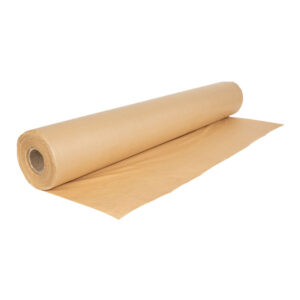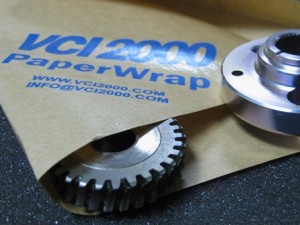In the dynamic world of packaging, the choice between VCI Bubble Bags and traditional packaging methods can significantly impact the preservation and protection of goods during transit and storage. This comparative analysis aims to delve into the key characteristics, advantages, and disadvantages of both VCI Bubble Bags and traditional packaging, offering insights to help businesses make informed decisions when it comes to safeguarding their products.
Understanding VCI Bubble Bags
What are VCI Bubble Bags?
VCI Bubble Bags are a specialized form of packaging that integrates VCI technology with traditional bubble wrap. VCI technology creates an invisible layer on the surface of the product, preventing corrosion and rust. The combination of VCI and bubble wrap provides a dual-layered defense against physical damage and environmental threats.
Advantages of VCI Bubble Bags
- Corrosion Protection: VCI technology forms a protective shield on metal surfaces, inhibiting the corrosive process. This is particularly advantageous for products made of ferrous metals, such as steel and iron.
- Cushioning Effect: The bubble wrap component of VCI Bubble Bags offers excellent cushioning, reducing the risk of damage from impact during handling or transportation.
- Versatility: VCI Bubble Bags are available in various sizes, making them suitable for packaging a wide range of products. The versatility of these bags makes them a popular choice in industries ranging from automotive to electronics.
- Environmentally Friendly: VCI Bubble Bags are often recyclable and environmentally friendly, contributing to sustainability efforts in packaging.
Traditional Packaging Methods
The Basics of Traditional Packaging
Traditional packaging involves using materials like cardboard, foam, and plastic for protection during shipping and handling. This method has been a staple in the industry for decades, offering reliability and flexibility.
Advantages of Traditional Packaging
- Customizability: Traditional packaging allows for a high degree of customization, enabling businesses to tailor packaging solutions to specific product dimensions and shapes.
- Cost-Effectiveness: Traditional packaging materials are often more affordable than specialized solutions, making them a cost-effective option for businesses with budget constraints.
- Widely Available: Materials for traditional packaging are readily available, making it easy for businesses to source and use them on short notice.
- Sustainability Options: With increasing awareness of environmental concerns, traditional packaging materials can now be sourced from sustainable and recyclable options.
Comparative Analysis
Corrosion Protection
VCI Bubble Bags:
- Effective corrosion protection for metal products.
- Offers a proactive approach to preventing rust and corrosion during storage and shipping.
Traditional Packaging:
- Relies on the choice of materials; some may not provide sufficient protection against corrosion.
- Requires additional corrosion inhibitors for metal products, adding to the overall cost.
Cushioning and Physical Protection
VCI Bubble Bags:
- Incorporates bubble wrap for enhanced cushioning.
- Reduces the risk of damage from impacts during transit.
Traditional Packaging:
- Customizable for specific product dimensions and shapes.
- May require additional padding or inserts for fragile items.
Versatility
VCI Bubble Bags:
- Available in various sizes and suitable for a wide range of products.
- Commonly used in industries with diverse packaging needs.
Traditional Packaging:
- Highly customizable to fit specific product requirements.
- Suitable for a broad spectrum of products, with different materials and designs available.
Environmental Impact
VCI Bubble Bags:
- Often made from recyclable materials.
- Contributes to sustainability efforts with environmentally friendly options.
Traditional Packaging:
- Sustainability depends on the choice of materials.
- Increasing availability of eco-friendly options in response to environmental concerns.
Conclusion
In the ongoing debate between VCI Bubble Bags and traditional packaging methods, the choice ultimately depends on the specific needs and nature of the products being transported. VCI Bubble Bags excel in corrosion protection and cushioning, making them an excellent choice for metal products. On the other hand, traditional packaging methods offer versatility and cost-effectiveness, catering to a broad range of industries.
As businesses navigate the complexities of the packaging landscape, a hybrid approach that combines the strengths of both VCI Bubble Bags and traditional packaging may prove to be a strategic solution. By leveraging the benefits of each method, companies can optimize the protection of their goods while considering cost, environmental impact, and customization requirements.
In the end, the decision between VCI Bubble Bags and traditional packaging hinges on a careful consideration of the unique needs of the products, the desired level of protection, and the overall sustainability goals of the business. As technology and environmental awareness continue to shape the packaging industry, staying informed about the latest developments will be crucial for making choices that align with both business objectives and global sustainability initiatives.






